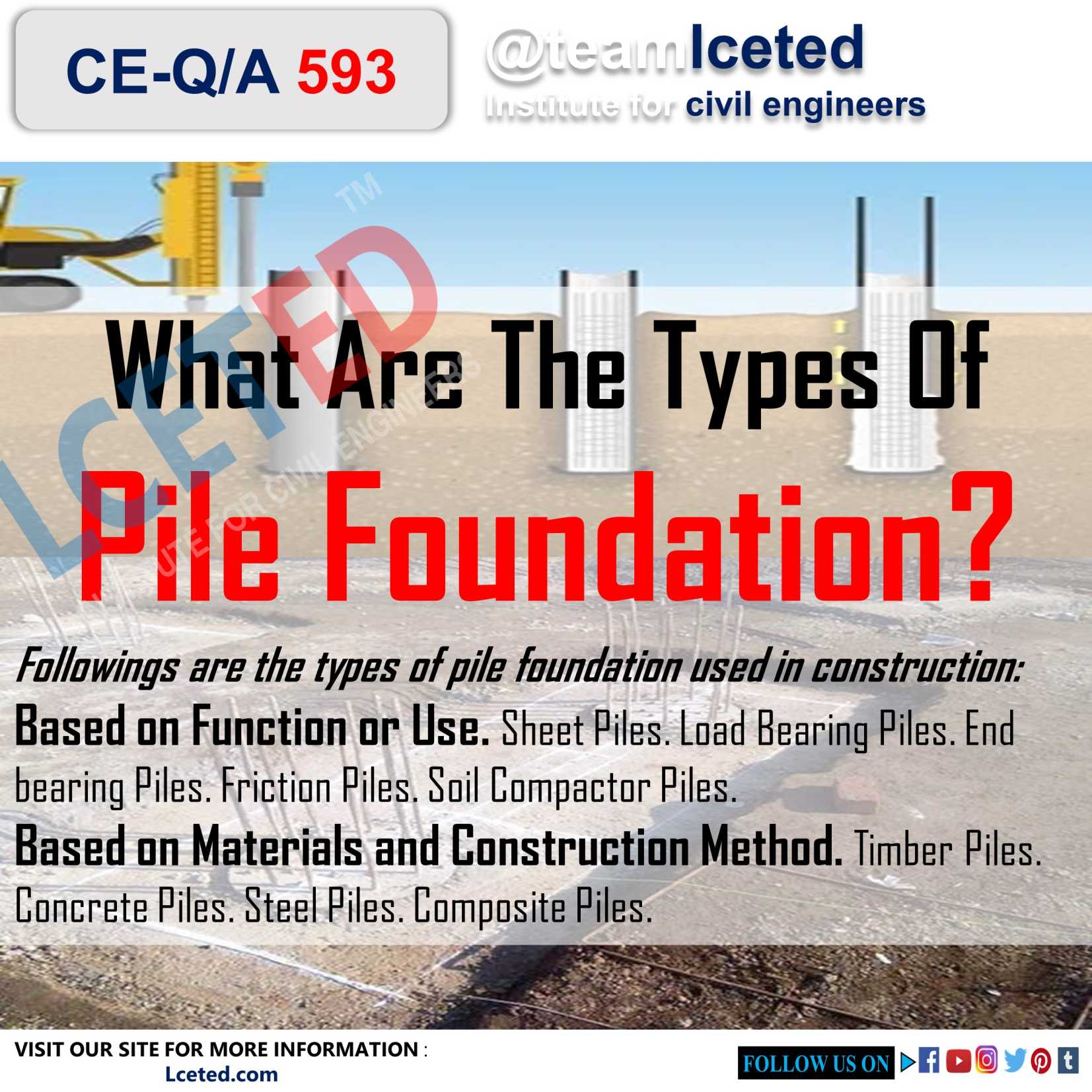Pile foundations are underground structures that support a building. Piles are tall pillars that extend down into the ground to keep the building above them stable. They are usually used in situations where the top layer of the soil is weak and cannot hold the weight of the building.
CLASSIFICATION OF PILES
Piles
can be broadly classified into two categories.
CLASSIFICATION BASED
ON THE FUNCTION
i. Bearing piles: These piles penetrate through soft soils and their
bottom rests on a hard stratum. The soft ground through which the piles pass
also gives lateral support and increases the load-carrying capacity of the
bearing piles.
ii. Friction piles: When loose soils extend to a great depth, piles are
driven up to such a depth that frictional resistance developed at the sides
of the piles equals the load coming on the piles.
iii. Screw piles: Screw piles consist of a hollow cast-iron or steel
cylinder with one or more blades at the bottom. The blades are generally made
of cast iron. The bottom end of the screw pile with a blunt point is useful
when the ground to be penetrated consists of clay or sand.
iv. Compaction piles: They are used to compact loose granular soils in order
to increase their bearing capacity. These piles do not carry any load.
v. Uplift piles: These piles anchor down the structure subjected to
uplift due to overturning movement.
vi. Batter piles: These are used to resist large horizontal or inclined
forces.
vii. Sheet piles: These are used as bulkheads or as an impervious cut off
to reduce seepage and uplift.
CLASSIFICATION BASED
ON MATERIALS AND COMPOSITION
i. Cement concrete piles: Cement concrete piles possess excellent compressive
strength. These piles can be reinforced or prestressed.
ii. Timber piles: Timber piles are prepared from trunks of trees. They
may be circular or square. They are 30–50 cm in diameter with a length not
exceeding 20 times their top width. At the bottom, a cast iron shoe is provided
and at the top a steel plate is fixed. If a group of timber piles is driven, the
top of each member of the group is brought at the same level and then a
concrete cap is provided to have a common platform. It is difficult or even
impossible to drive these piles into the hard stratum or boulders.
iii. Steel piles: The different forms of steel piles are H piles, box
piles and tube piles. These piles can easily withstand the stresses due to
driving.
•
These piles can be easily lengthened by welding and also can be cut off easily.
•
These piles can resist lateral forces in a better way.
•
The bearing capacity of these piles is comparatively high.
•
These piles can take up the impact of stresses and can resist lateral forces.
The
disadvantage in steel piles is corrosion. To prevent corrosion they should be
coated with paints or maybe encased with cement concrete.
iv. Sandpile: These piles are made by boring holes on the ground and filling them with sand. The top of the sand piles is filled with concrete to prevent the sand from coming upwards due to lateral force. Sand piles are spaced 2-3 m and the length is about 12 times the diameter. Even though they are easy to construct and can be used irrespective of any position of the water table, they are not suitable for earthquake regions.
v. Composite piles: A composite pile is formed when it is a combination of
piles of two different materials. They are suitable where the upper part of a
pile is to project above the water table. They are economical and easy to
construct.
If you find
This information helpful, please share it.
Thanks! For reading the article.









No comments:
Post a Comment